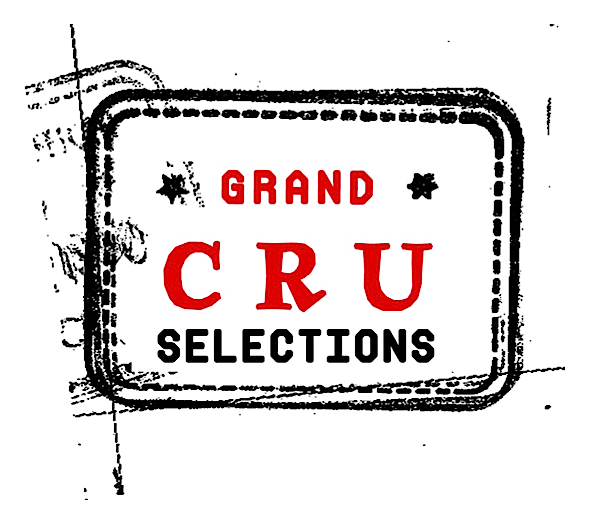CROIX ET COURBET
Jura, France
David Croix & Damien Courbet
We have a long history with David Croix, after an introduction from Becky Wasserman, we followed him straight out of oenology school into his successful revival of the Camille Giroud estate and soon after the launch of his own Domaine des Croix in Beaune. He parted ways with Camille Giroud in 2016 to focus his energies on his own domaine. So, more recently, when he explained a new collaboration with his longtime friend and fellow winemaker, Damien Courbet to launch a boutique Jura project centered on the grape Savagnin we paid attention..
With boots on the ground in the region, Damien Courbet went in search of beautiful plots of Savagnin and convinced the winegrowers to sell them the grapes. 2019 marks the first vintage of their collaboration - Croix et Courbet - based on exchange and joint work. Their objective is to work on the floral side of Savagnin, with wide experimentation without any real commercial constraint. These two are just getting started, with only a few thousand bottles produced but we’re thrilled to be along for the ride.
-
Croix et Courbet started as a small side project from David Croix (Domaine des Croix), Burgundian winemaker, and Damien Courbet, winemaker in the Jura, in Nevy-Sur-Seille more precisely that celebrates their combined interest in the Jura at large, rich in it’s variety of terroirs and the different climatic conditions.
Savagnin, with its late maturity and good resistance to rot is more robust than Chardonnay and also less sensitive to oxidation, allowing a very low use of sulphur. The objective is to reveal the grape’s floral side and reflect the diversity of the Jura terroirs through individual parcels. So, while the grape is often vinified in an oxidative way (sous voile), Croix & Courbet chooses to explore the full potential of this grape variety vinified without contact with oxygen (ouille).
They are making four 100% Savagnin cuvées, including two plot cuvées, from Arbois and Château-Chalon vines.
-
The Arbois appellation is sheltered from the winds under limestone cliffs, with marly subsoils rich in minerals and which retain the humidity typical of the Jura climate.
-
Grapes are sourced from organic growers, enough to launch with 5000 bottles in the first release in 2019, from 3 vineyards.
-
The wines are made in the cellar at Domaine Courbet. Their approach is intended to be minimally interventionist, native yeast fermentation and little, if any, sulfur. In the spirit of exploration, they tested several types of containers for breeding, barrels, stainless steel tanks, concrete eggs, before choosing the latter that neither of them had used before. This makes it possible to respect the specificities of Savagnin, while providing balance and freshness.
Wines
Côtes du Jura Savagnin Ouillé
This cuvée sees some fruit from both En Beaumont and En Chemenot, with the addition of a small parcel in Château-Chalon. It sees fermentation in concrete egg, moved to old 228 barrels and finished 18 months in stainless steel
Côtes du Jura ‘En Beaumont’ Savagnin ouillé (Château-Chalon)
While the AOC distinction of Chateau Chalon is reserved for wines kept under voille, this Savagnin in the reductive style, bent toward freshness via the Ouille profile.
The soil here is particularly rich in limestone and covered with a layer of clay that is only a few tens of centimeters thick. Matured in large wooden barrels (500L). The wine ferments completely without sulfur on its own yeast and is only slightly sulphured before bottling. 18mons
Arbois ‘En Chemenot’ Savagnin ouillé (Arbois)
North facing slope of cool marl, where the expression is lean and mineral intense. This coupled with the texture enhancement of motion in Concrete egg, in order to express the clear minerality of Arbois without make-up. The wine ferments completely without sulfur on its own yeast and is only slightly sulphured before bottling.
Côtes du Jura “Savadonnay”
70% Chardonnay, 30% Savagnin Terroir: A parcel selection from 4 ha total; vines planted between 1980 and 1989. The three parcels include: En Lya: western exposure, shallow clay-silt topsoil with limestone scree over a deeper layer of Liassic gray marl Au Calvaire: southeastern exposure on a gentle slope, tucked away in a valley, fine limestone scree and clay topsoil above gray marl Trémoulette: at the bottom of a west-facing slope, fine limestone scree and clay topsoil above gray marl Vinification: ** Whole bunches, gently pressed (pneumatic). Fermentation in in 228-liter barrels (5 to 6 year old), lasting about 3 months. Full malo, with first SO2 addition afterward. Aged 18 months in barrel, followed by another 18 months in tanks. Fined, lightly filtered.

